When you see curling tomato plant leaves, you should know it’s a sign of sickness. It reflects the state of distress of your tomato plants and can happen for several reasons. It may be your watering style, soil quality, extremely low or high temperature, or sometimes pests attack on your tomato plants.
If you take the correct measures to take care of your plants, like using appropriate fertilizer, rich soil mix, watering them timely, keeping the soil moist, etc., you can save them and give them a healthy life.
What Does Tomato Plant Leaf Curl Mean and Its Types?
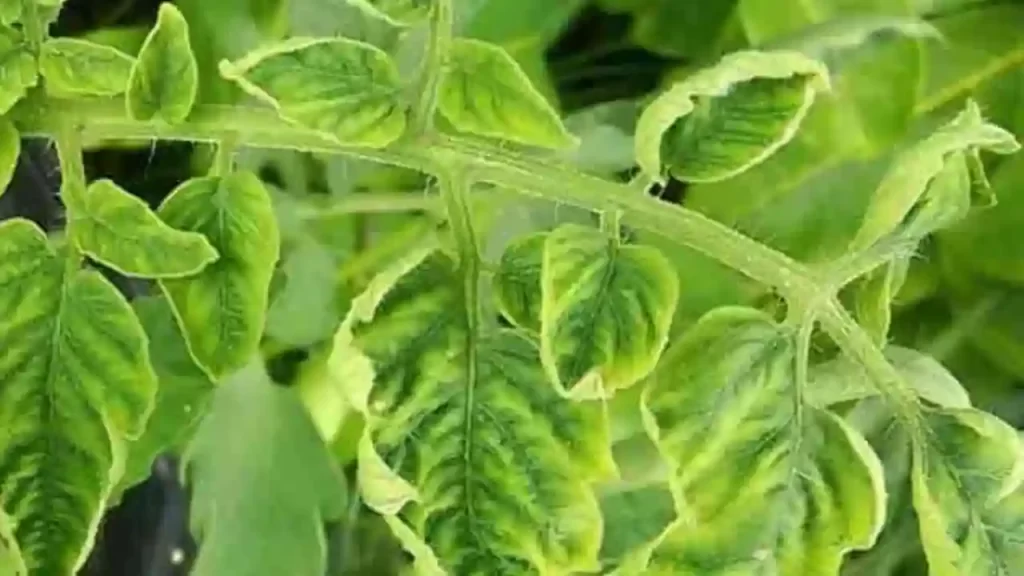
Many challenges are faced while planting tomatoes as they are very delicate and more prone to getting infected and caught by diseases and pests.
Non-heirloom varieties of tomato plants are more prone to get infected. When their leaves start curling, it means they are infected, and it is time to cure your plant to save them.
But let me make it clear that every time curling is not a negative thing. This article has covered how to track when curling is a bad sign for your tomato plants. (1)
Here are the the types of curling seen in Tomato plants:
Leaves Curling Up
Almost 98 percent of the time, tomato leaf curl due to sudden weather changes, like exposure to excessive heat due to increased temperature, water deficiency, or increased wind.
It is the inherent capacity of plants to curl up their leaves in order to protect themselves from environmental stress.
Leaves curling up is very general for tomato plants; they automatically get into a normal state when the environmental stress becomes normal.
Leaves Curling Down
When you notice the leaves of your tomato plant are curling down, then this is alarming because it is a sign of the root rot of your precious tomato plants.
The leaves start curling down when your plant is overwatered, and the drainage system of the soil needs to be better.
In this situation, the roots try to hold the pressure of water to save the plant. Due to this, the root starts decomposing and becomes inefficient in delivering adequate water and nutrients to the plants, leading to the curling down of leaves.
To fix this problem, wait for your soil to be moist only up to 2.5 CM before watering them again and arrange a better soil drainage system.
Leaves Curling at the bottom
Curling leaves at the bottom is a symptom of a deficiency of micronutrients. This happens when the soil loses its nutrition, and adequate nutrition is not delivered to the plants.
You can also track this problem when yellow leaves are seen on the plants.
You can quickly fix this problem using Azomite clay, which contains the necessary nutrients. The use of rich soil mix also helps to reduce this problem. Compost and Trifecta+ are safe to use and help enhance soil nutrition without damaging the plant.
Leaves Curling on the Top
Leaves start curling on the top due to the attack of the pest or bug. The leaves would be small and curled on the top, and this disease is called a curly top virus.
This disease stops the plant growth, but fortunately, it does not spread to other plants.
If the plant has already produced fruit, it grows to maturity. It is always advised to dispose of the plant after the harvest and use that space to plant new tomato plants.
Sometimes, it takes a lot of work to resolve the top curling issues.
Causes of Tomato Plant Leaves Curling
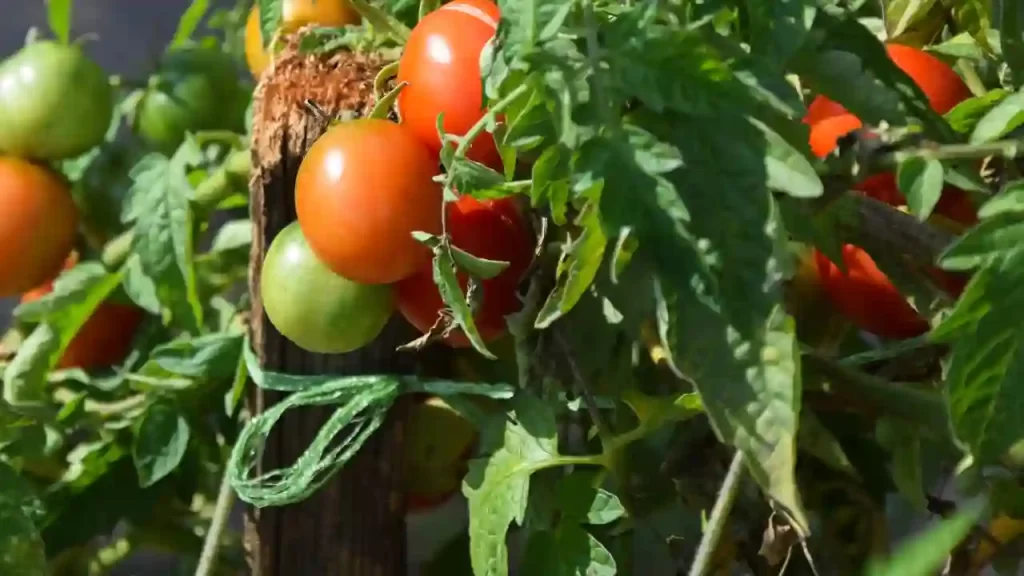
The tomato plant is very delicate, and harvesters face plenty of challenges while cultivating tomatoes, and leaf curling is one of those common and major problems.
This leaf roll situation is not always dangerous. It happens due to various reasons, and the distressed environment is one of those reasons.
This problem is not that tough to be resolved when identified.
When the leaves curling is due to environmental plants, your plants return to healthy conditions when the environment becomes normal
Besides environmental stress, if the leaves start curling, it becomes damn difficult to save the plant.
But if you can detect the problem at an early stage, you will be able to solve and maintain the health and long life of your tomato plants.
Here are some other causes responsible for the tomato leaf curling.
Incorrect Watering
We all know that watering is very important for any plant and tomato plants are no exception. It is very important to water your tomato plants in the correct amount as both overwatering and underwatering are dangerous for the plant.
Due to underwatering, plants won’t get enough hydration, and overwatering results in root rot.
The leaves curl inward when you don’t water tomato plants correctly.
If your plant is overwatered, it will give many other signs before curling up the leaves, but under-watered tomato plants are more prone to get their leaves curled as enough water is not supplied to the plant.
This happens because leaves try to save extra water loss from sun exposure. (Check our blog “How much water do tomato plants need?”)
Excessive Heat
The ideal temperature for tomato plants is 21-26 degree Celsius. When the temperature goes beyond the ideal temperature during the summer, the plant goes through underwater stress. This happens when the temperature rises and plants are more exposed to the sun.
Stomatal transpiration is caused due to excessive heat, and leaves start curling inward to prevent more water loss and protect themselves from the sun. You can also have this problem when your plants don’t get adequate water.
To save your plant from excessive heat, you can create physical barriers with the help of clothes and arrange shade for your plants in extreme heat.
If you have potted tomato plants, bring them indoors during excess heat. With the temperature fall, the leaves start getting normal automatically.
Too Much Nitrogen
We use Nitrogen-content fertilizers when we first plant tomatoes. Fertilizers containing nitrogen, phosphorus, and potassium (18:18:21) are best recommended at this stage.
But at the fruit-producing stage, only phosphorus and potassium-contained fertilizers should be used as these are the nutrients tomato plants need for flowering and fruiting.
Using nitrogen at this stage leads the leaves to curl inward, as the plant focuses more on producing leaves rather than fruits.
If your tomato plant’s leaves are curling due to excess nitrogen, it can be naturally resolved over time.
In this situation, always opt for the right and good fertilizers and avoid overuse of nitrogen-rich fertilizers to maintain a good nutrition level in the soil.
Excessive Pruning
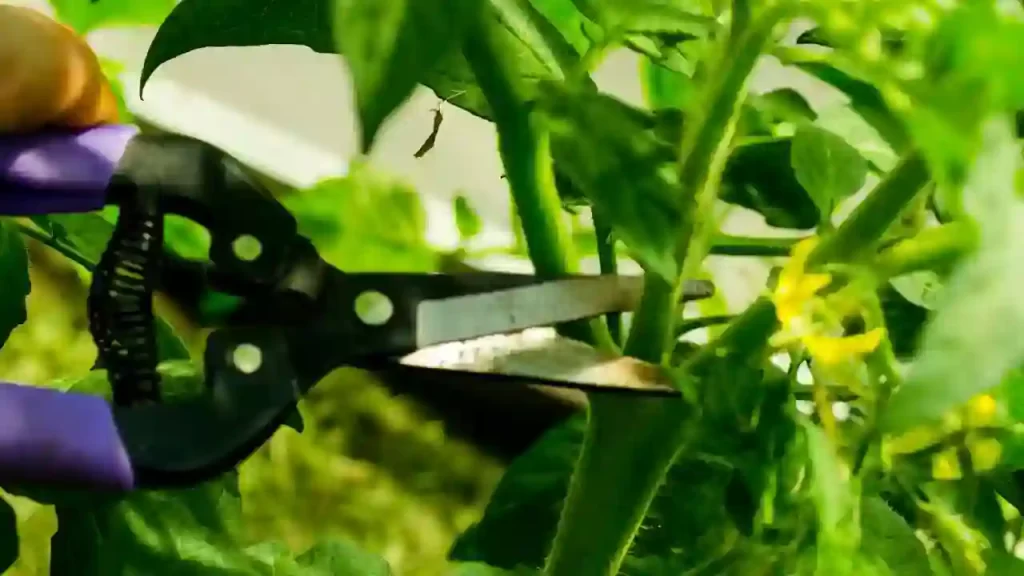
Anything beyond the limit causes the worst impact only. The pruning of tomato plants is good, but only if it is limited. The problem of tomato leaf curl is more common because of excessive pruning.
The plants face more direct sunlight after pruning which causes heat stress to the plant, and the curling of leaves happens due to dehydration, as discussed before.
You should do very little cutting of leaves from the lower and upper stems if you have planted indeterminate plants, as it improves airflow and growth. But never opt for pruning of determinate tomato plants.
If your plant is going through the stress of pruning, just leave the plant as is and let it recover itself. With the growth of new leaves, this problem will resolve itself.
Transplant Shock

We can also notice the tomato leaves curling after transplanting (due to transplant shock).
If these plants are transplanted, the chances of root damage are high. The damaged roots become inefficient in delivering adequate nutrients and water to the plants; you notice wilting and yellow leaves.
When plants go through transplant shock, we should be calm and allow them at least two weeks to recover on their own.
Herbicide Exposure
Tomato plants cannot bear herbicide exposure as it causes leaves to curl when it comes in contact with the plant.
In this situation, leaves curl downward, which is a dangerous sign for the tomato plants as it causes severe loss to the plant, and there is no remedy to overcome this leaf curling situation.
Plants can still grow with little damage, but the yield is negatively impacted. And if the plant is heavily impacted by herbicide exposure, they do not even survive.
But the best part is that this problem is very rare; therefore, you should refrain from using herbicides in your garden.
Tomato leaves also curl down because of various diseases and fungus infections.
Viral Diseases
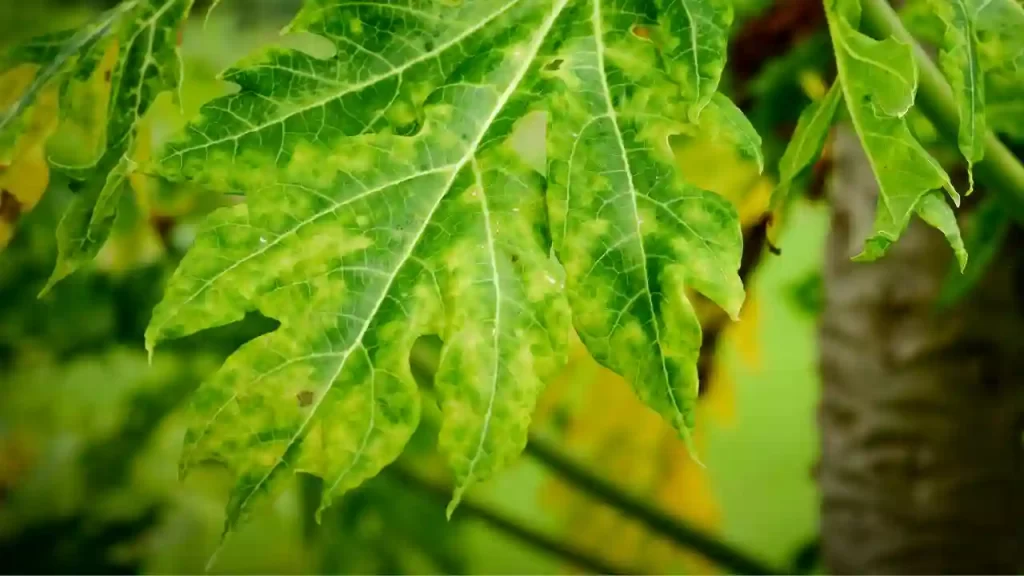
The disease is a curse for any plant, and when it comes to leaf curling causing due to viral disease, it feels like a nightmare for any harvester.
When the tomato leaves turn yellow or pale green at the edges and start to curl upward, it is a sign of infected plants due to a viral disease called tomato yellow leaf curl virus.
The newly grown leaves turn into a cup shape and cause the leaves to curl upward. This stress is caused when the viruses have already attacked the plant.
The other reason is the whiteflies, whichare the enemy of tomato plants, spread the disease all over the plant in your garden. The plant’s growth is inhibited, and fruit production is also reduced.
You can use horticulture oil and insecticidal soaps to control the whiteflies, which in turn helps reduce the disease’s spread.
When the fruit color changes to brown, and you notice spotty leaves in the plant, it is a sign of tomato mosaic virus.
Due to the spread of this virus, the leaves curl inward, and newly grwing leaves grow small in size. This virus is transmitted by aphids which are also known as plant lice.
Unfortunately, there is no treatment to save the plants when infected due to the viruses. The only way is to dispose of the infected plant.
The only mantra to save your plants from these viruses is to keep your garden weed free, as they are one of the main reasons for the transmission of viruses in tomato plants.
How To Save Your Tomato Plant Leaves From Curling?
Tomato plant leaves curl due to various reasons and it is a sign which shows that the plant is sick. It happens due to environmental stress, wrong choice of fertilizers, watering issues and many more. Sometimes the plants die even without producing the fruits.
Firstly we need to figure out the number of leaves curling, curling direction, is it getting recovered on its own within a few days, whether new or old leaves are curling and even the fruit is also getting any adverse impact at the same time. After giving a close observation, you can take appropriate action against it.
We can overcome some of the curling reasons by using certain tips which are discussed below in brief.
Save them from Excessive Heat and Stress
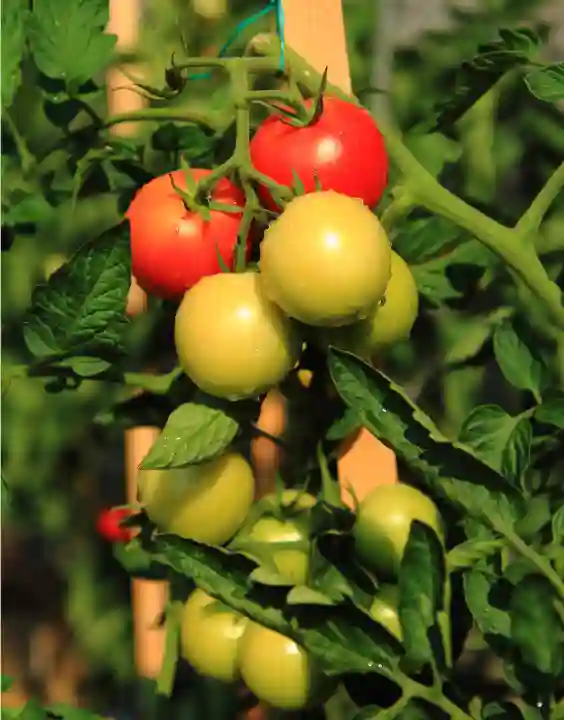
Tomato is a warm environment-loving plant, but when the temperature goes beyond ideal, the leaves start curling inward due to excessive heat. It happens especially in summer when the temperature goes beyond 26 degrees Celsius and plants struggle a lot for survival.
Due to excessive heat, underwater problems arise, and plants do not get enough water. Due to lack of water, the leaves curl down to protect the plant from excessive heat.
Leaf curl also happens due to loss of soil moisture, sudden heat waves, and other environmental stress.
Actions to be taken:
- Water your plant properly to overcome heat stress. Before watering, always measure the soil moisture. If it’s dry till 2.5 inches deep, then it’s right to water your plants.
- Avoid frequent watering during the rainy season as it may cause root rot which leads to leaf curling.
- Create some physical barriers with clothes to provide shade to your plants if it is going through heat stress. You should keep potted plants indoors during excessive heat.
Short-term environmental stress won’t harm the plants, and they recover naturally when the environmental condition is normal.
Use fertilizer containing a good mixture of nitrogen
Using good fertilizers for tomato plant cultivation is an excellent option. Always choose fertilizers containing nitrogen, phosphorus, and potassium in the ratio of 18:18:21.
You should stop the use of nitrogen at the time of fruit producing season. Otherwise, lumpy, thick, and bad-quality leaves would develop on the plant, and curling of leaves happens.
I always recommended limited use of the best fertilizer for tomato plants.
Water Them Well if Pruning
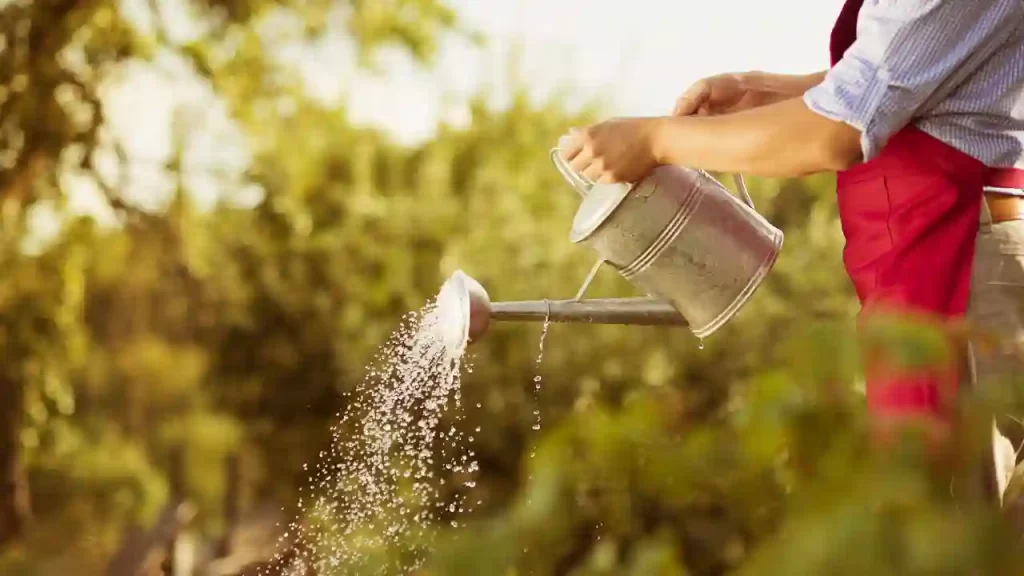
Over-pruning tomato plants can leave the plant in danger; therefore, you should always avoid over-pruning.
Plants get energy from their leaves, and when they are pruned, they feel an excess loss of energy, and the growth and longevity of the tomato plant are compromised.
If you have already over-pruned your tomato plants, water them in adequate amounts to keep them hydrated and allow at least two weeks for the plant to recover on its own.
Minimize transplant shock
After germination and seedling, the next process is transplanting the tomato plants. Due to transplanting shock, the delicate roots of tomato plants get damaged, and they are unable to supply proper nutrients and water to the plant. As a result, the leaves start curling up.
Points to remember:
- The plant recovers from transplanting shock on its own for almost within two weeks.
- You should water the plant properly for its speedy recovery.
- Don’t rush hardening off your tomato plant. Slowly and gradually, bring them into outside environments after seedlings.
- Create physical barriers with the help of clothes to provide shade.
Prevent Exposure To Herbicide
Tomato plants cannot bear herbicide exposure. It causes curling of tomato leaves when it comes in contact with the plant.
In this situation, leaves curl downward, which is a very dangerous sign for the tomato plants as it causes severe loss to the plant, and there is no remedy to overcome this leaf curling situation.
Plants can still grow with little damage, but the yield is negatively impacted. And in case the plant is heavily impacted with herbicide exposure, they do not even survive.
But the best part is that this problem is very rare. It is best not to use herbicide in your garden. Tomato leaves also curl down because of various diseases and fungus infections.
Use Weed Killers
If you are using manure and compost for your tomato plants and at the same time curling tomato leaves problem is also identified, then it must be because of the use of weed killers in the manure and compost used.
Always use good quality manure and compost and try buying it from a trusted source. You should avoid the use of weed killers near tomato plants. Plants affected due to this die without even producing fruits.
Identify and Remove the Leaves (Plant With Viral Disease)
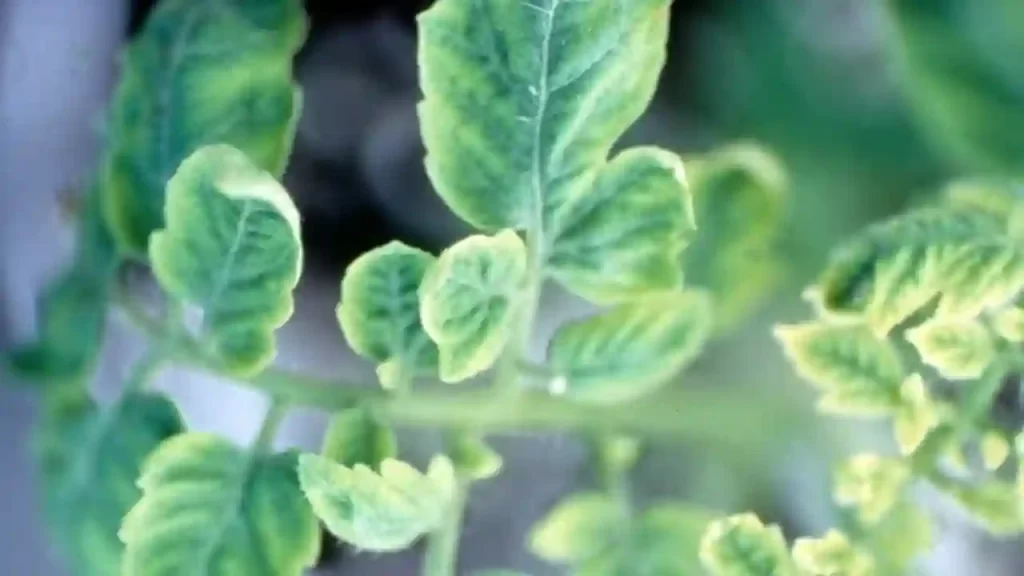
Leaf curl is a dangerous disease for tomato plants. The edge of the leaf becomes pale yellow or green and curls. The virus forces the leaves to curl upward and form a cup-like shape when stressed.
Whiteflies are the main reason behind the cause of this disease in tomato plants or even in any of the plants.
The tomato leaves are rolled inward due to Tomato Mosaic Virus. They impact the leaves by forming spots on the leaves, and fruits turn their color into brown from the inside.
If you have figured out this virus in any of your tomato plants, pull the plant and destroy or dispose of them.
Do not even use them as compost, or the disease would spread in your whole garden.
Summary
Curling of tomato leaves is a major problem that can be taken care of easily if identified early. So always watch your tomato plants to detect any such issues.
With the above-discussed tips and trips, you can keep your plant long & healthy and save them from curling.
Recent Posts
Are you ready to plant tomatoes for the best tomato harvest of your life? It all starts with getting the fertilizer right! Fertilizing tomatoes can seem daunting, but when done correctly, it’s...
9 Reasons Why Your Tomato Plants Wilting and How To Fix This!
When the gardeners see their lovely and precious tomato plants wilted, they become hopeless, sad, and impatient. But the situation can often be reversed with proper care and adopting a few good...
